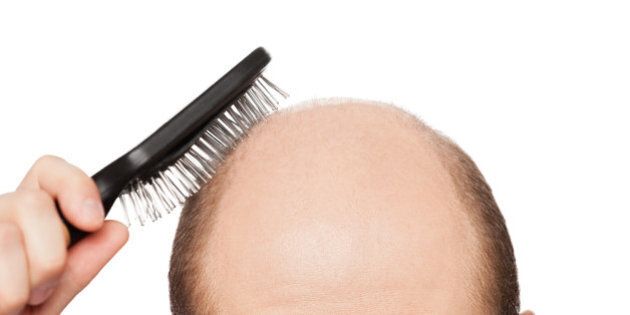
Despite recent advances in understanding and treating hair loss, there is still unfortunately an abundance of misinformation and misconceptions surrounding what exactly causes hair loss, who is at risk, and how to treat it.
But one thing that everyone can agree on is, losing your hair can be scary. In fact, hair loss is often cited as one of the biggest health and aging concerns among both men and women.
So in honor of Halloween, here are six of the scariest truths about hair loss.
Over-the-counter minoxidil may only work well for about 35 percent of patients.
Although it is FDA-approved and has proven science behind it, the catch with minoxidil is that it does not work for everyone. In fact, over-the-counter minoxidil may only work well for about 35 percent of patients, according to medical studies. These studies suggest that a patient has to have an active enzyme called "sulfotransferase" for the hair follicles to respond to minoxidil treatments.
It is this enzyme which converts topically applied minoxidil into the active chemical "minoxidil sulfate," which is what stimulates the follicles. Not everyone has enough sulfotransferase to activate minoxidil properly. There may be other biological roadblocks too -- like inflammation at or around hair follicles in the scalp and other factors -- which can affect minoxidil's action.
To make matters worse, traditional minoxidil's residue can also interfere with hairstyling. The bottom line for patients is that there is a 65 percent chance that standard over-the-counter minoxidil will not help you. Instead, you may require a prescription for a specially formulated, compounded minoxidil solution (like Formula 82M) for optimal results.
You can't trust the "mirror test."
Once hair loss becomes visible to the naked eye, up to 50 percent of the follicles may already be irrecoverable. Patients who treat their hair loss early on will have a better chance of maintaining a full and healthy hairline. A common mistake with detecting hair loss is to rely on the "mirror test" before taking action.
That is, most people wait until their hair loss becomes readily noticeable -- perhaps it's diffuse thinning in the crown for men and women, or a receding hairline in men. However, relying on this type of visual confirmation puts the patient at a disadvantage because as noted above, by the time hair loss is visible half of the follicles could already be gone.
Hair loss can have deep rooted effects.
While hair loss is often falsely thought of as merely a cosmetic problem, studies have proven that hair loss can have wide-ranging psychological effects, including loss of confidence and self-esteem and, in some cases, depression, anxiety, social withdrawal and more. Preventing further hair loss and improving hair growth can restore a feeling of vitality, youth and confidence in both men and women.
For men, the risk of hair loss is proportional to age.
Male pattern baldness can start any time after puberty. But while 20 may seem early for hair loss to start, that is the reality for nearly of quarter of men. According to the American Hair Loss Association, by the age of 35, approximately one-thirds of men will experience some degree of hair loss; and by the age of 50, 50 percent of men will have significantly thinning hair.
As men age, the risk of losing hair increases, and is proportional to age: 60 percent in 60s, 70 percent in 70s, and so on.
Women are almost as at risk as men.
Roughly half of all women over the age of 40 suffer from some form of hair loss. That's right -- half. While most people tend to think of hair loss as a man's problem, the reality is that women are almost just as likely as men to lose their hair.
Female hair loss can be mild or severe, and there are a variety of factors at work that determine how a woman's hair will change over time. Hair loss can start at any age - teens, twenties, thirties, forties, and a woman's risk skyrockets after menopause.
Hair can't be regrown once the follicle is dead and gone.
While medications, laser therapy, PRP, nutritionals, etc. can help make hair follicles grow thicker healthier hair, once the follicle is dead and gone, the only option for having hair in that area is a hair transplant. Which is why early detection and intervention are key to maintaining a healthy head of hair.
If you are concerned about hair loss, or would like more information on the growing number of effective treatment options, you should contact a ABHRS-certified hair restoration physician -- someone who specializes exclusively in the medical diagnosis, treatment and tracking of hair loss and its treatment. These specially trained physicians have had extensive training specific to treating hair loss, and have up-to-date knowledge of the newest treatment options.
Follow HuffPost Canada Blogs on Facebook